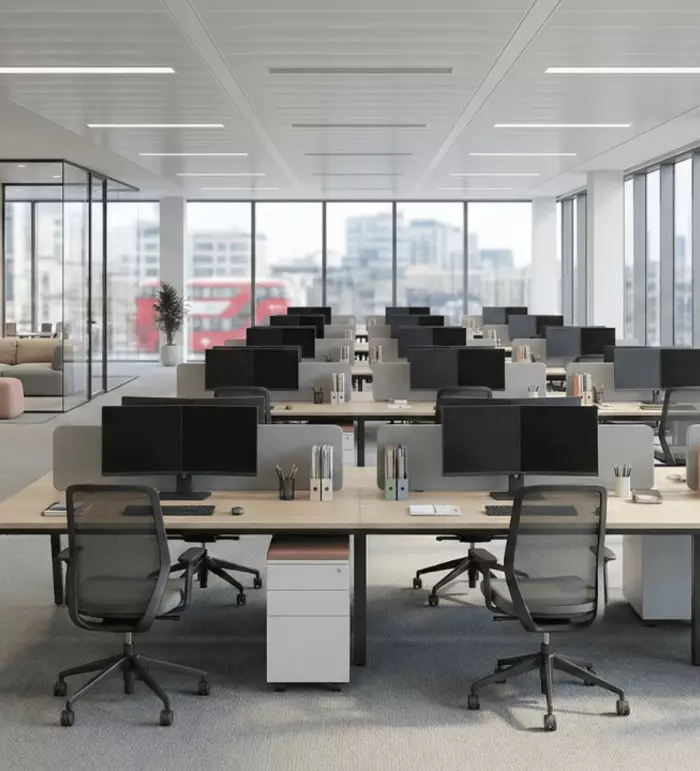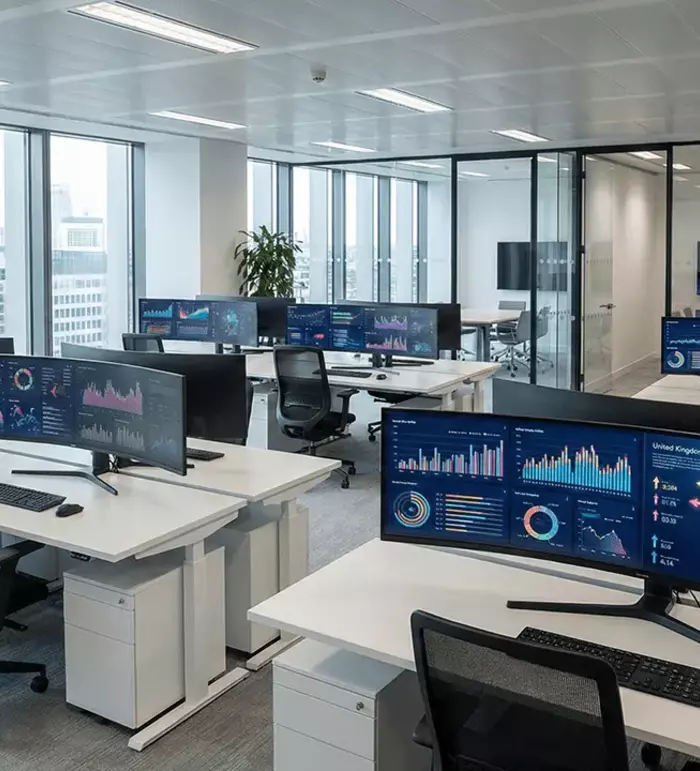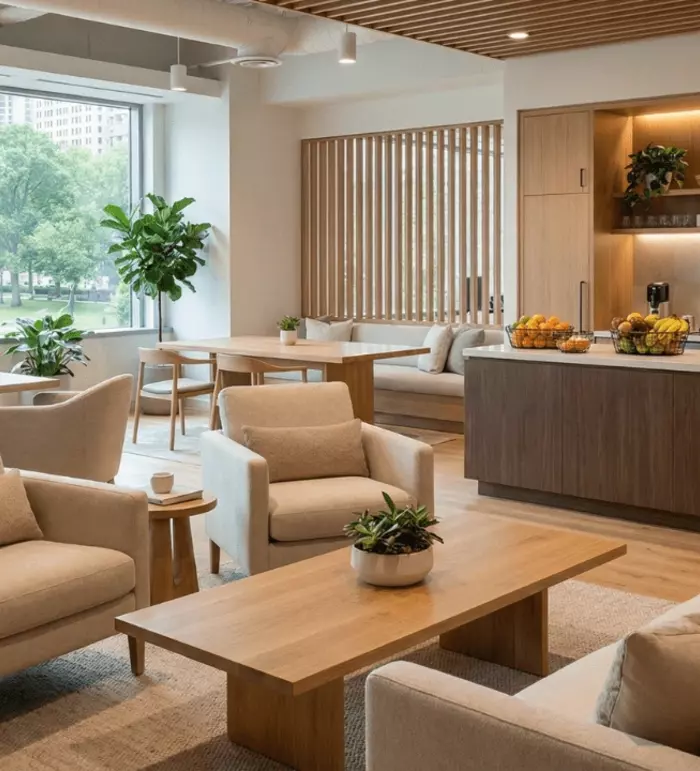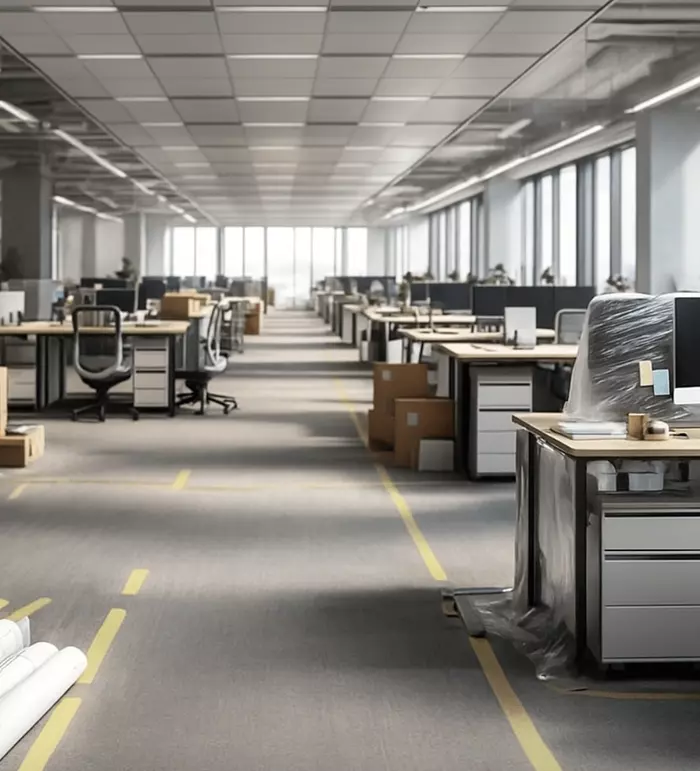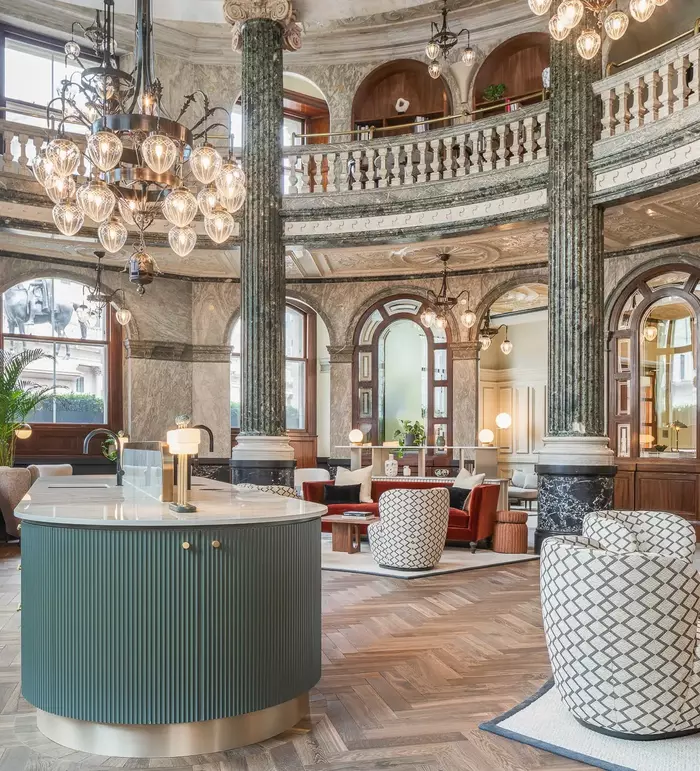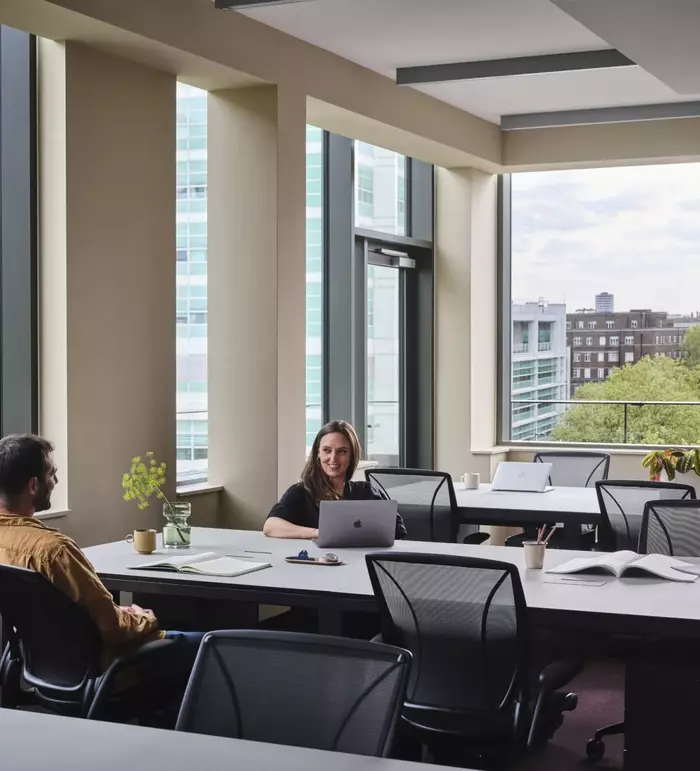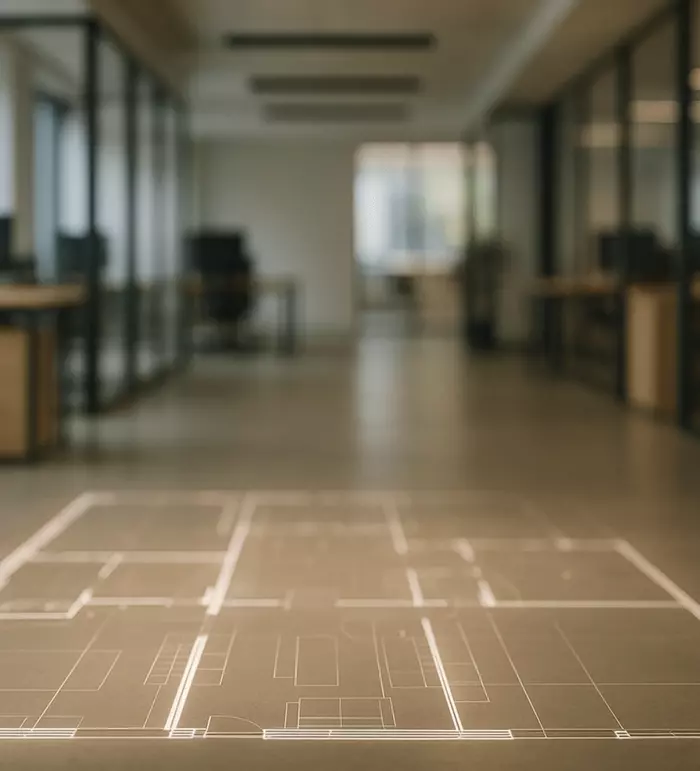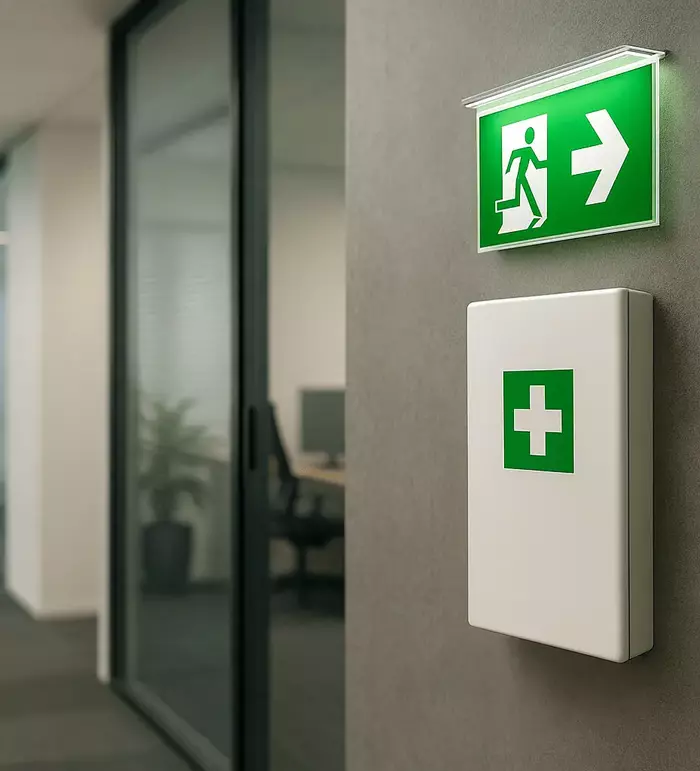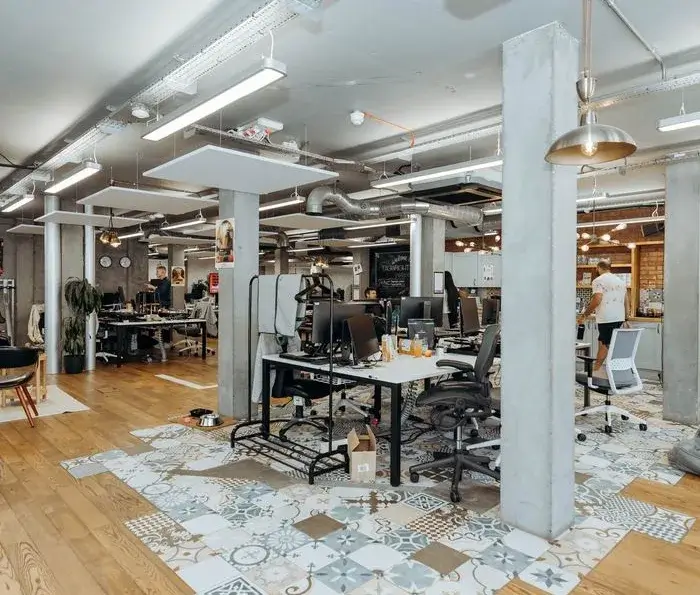Office space trends are dramatically shifting as data shows strong workplace relationships directly impact productivity. 82% of workers with the strongest relationships regularly sit with their teams in the office, and these employees are twice as likely to be aware of what their neighbours are working on compared to those with weaker connections.
While hybrid work continues to evolve, with 86% of companies reporting they're moderately to highly effective at supporting a hybrid workforce, forward-thinking organisations are reimagining their physical environments. Workplace trends now prioritise employee well-being, with studies showing that exposure to greenery and natural light significantly boosts productivity and reduces stress. Additionally, office design trends are increasingly focused on sustainability, as a 2023 report found 90% of workers believe a sustainable workplace benefits both people and planet.
In this article, we'll explore what smart companies are implementing right now to prepare for the future of the office in 2025, examining how physical spaces are transforming from mere utilities to strategic assets that drive collaboration, wellness, and competitive advantage.
Why Office Design Matters in 2025
In 2025, workplace design has evolved from a functional necessity to a strategic business asset. Forward-thinking companies now recognise that physical environments directly impact business outcomes and employee satisfaction.
The shift from utility to experience
The contemporary office has transformed from a place of utility to an experience-driven environment. According to research, the social purpose of the workplace has become the paramount reason for returning to the office. Modern workplaces prioritise collaboration, social interaction, culture, and connectivity, moving beyond mere function to create meaningful experiences. Indeed, as work becomes increasingly complex, offices must support intense concentration while simultaneously enabling hyper-collaboration. This fundamental shift requires thoughtful design strategies that balance individual focus and team dynamics.
How hybrid work changed expectations
Hybrid work has permanently altered what employees expect from physical workspaces. With 83% of organisations having adopted hybrid work models, companies must reimagine their offices to complement remote work rather than compete with it. Furthermore, the stakes are high 77% of employees would consider leaving their jobs if hybrid work flexibility weren't an option. Three in ten hybrid workers report being extremely likely to leave an organisation if not offered remote flexibility. Consequently, successful companies design offices with intentionality, focusing on team tasks, coaching, and development during in-person days.
The role of the office in talent retention
Office design now plays a crucial role in talent retention and recruitment. Well-designed workspaces can reduce employee turnover costs, which currently average over £25,000 in productivity losses with replacement periods extending up to 28 weeks per employee. Research shows that redesigned offices offering varied workspaces, views, and green elements significantly increase employee satisfaction, with satisfaction scores jumping from 58 to 83 points (on a 100-point scale) after thoughtful redesigns. Productivity scores similarly increased from 52 to 71 points.
Above all, employees are far more engaged with organisations that demonstrate care through their spaces. As one workplace expert notes, "Any business that cannot communicate and reflect their brand values and mission in the design of their spaces demonstrates a disconnect". The message is clear: in 2025, office design isn't just about aesthetics, it's about creating environments where people want to be, fostering community, and ultimately driving business success.
What Smart Companies Are Prioritising
Leading organisations are reimagining their workplaces through three key priorities that maximise both employee experience and business outcomes. These strategic investments reflect a deeper understanding of how physical environments drive productivity, innovation, and talent retention.
Flexible layouts and activity-based zones
Smart companies are abandoning rigid office layouts in favour of adaptable spaces that support different work modes. Activity-based working (ABW) provides employees with purpose-designed areas that match specific tasks from focused work to collaboration. Research shows employees in activity-based workplaces are 16% more productive than those in traditional settings, equivalent to gaining an extra 6.4 hours weekly per employee.
These flexible environments typically include four key settings: collaborative zones for teamwork, private areas for deep focus, café spaces for casual interactions, and formal meeting rooms. Moreover, hot desking arrangements allow for workforce scaling without reconfiguration costs, with over half of companies maintaining or increasing headcount per square foot after implementing ABW.
"Flexibility is essential for attracting younger talent," notes workplace research. "One of the key factors in engaging millennial and generation Z workers is providing greater flexibility in where, when and how they work". Enquire Now to learn how your organisation can implement these flexible workspace solutions.
Wellness-first design strategies
Employee wellbeing has become a business imperative, especially as mental health issues now represent the most common work-limiting conditions for those under 44. Wellness-centred office design includes:
Dedicated relaxation spaces where employees can recharge
Biophilic elements that reduce stress and improve air quality
Ergonomic furniture supports physical health
Natural light exposure throughout workspaces
Sensory-considerate zones for neurodiverse employees
Notably, 91% of people report needing casual spaces to re-energise, yet more than half have nowhere to go within their workplace. In response, forward-thinking companies are creating wellness rooms designed with privacy, biophilic elements, and thoughtful colour schemes to foster relaxation and mental restoration.
Tech-enabled collaboration spaces
As hybrid work becomes standard practice, smart companies are investing in seamless technology integration. Office spaces now feature IoT-enabled devices controlling lighting, temperature, and security for optimal comfort and energy efficiency. Meeting rooms incorporate advanced video conferencing tools and AR/VR setups supporting remote collaboration.
In particular, companies are redesigning meeting spaces based on work modes rather than room size. Effective hybrid collaboration spaces are built around four key activities: conversational exchanges, presentations, discussions with references, and co-creation sessions. Instead of generic conference rooms, spaces are specialised for these specific interaction types.
Small, tech-focused meeting rooms for two to three people have become increasingly common, with updated seating arrangements ensuring all participants can engage fully, whether in-person or virtual. This thoughtful integration of technology and space design creates what experts call an "experience multiplier" for future workplaces.
How Offices Are Becoming Destinations
With hybrid work now firmly established, workplaces are transforming into compelling destinations that employees actively choose to visit. This shift represents one of the most significant office space trends of 2025, as organisations recognise that physical workplaces must offer experiences unavailable elsewhere.
Placemaking and hospitality-inspired design
First thing to remember, offices designed as destinations integrate principles from urban planning and hospitality to create memorable experiences. Placemaking a concept that "inspires people to collectively reimagine public spaces as the heart of every community" has moved from city planning into workplace design. Forward-thinking companies now incorporate mixed-use elements that fulfil multiple functions simultaneously, creating spaces where work, living, and recreation seamlessly blend.
The hospitality influence is equally profound, with offices borrowing strategies from hotels and resorts. Just as hotels differentiate themselves from Airbnb through personalised service and unique atmospheres, innovative workplaces now offer curated experiences beyond mere task execution. For instance, Unilever's London headquarters features a central "living room" space with informal seating and ambient lighting designed to feel more like a boutique hotel than a corporate office.
Resimercial aesthetics for comfort
In essence, resimercial design the blending of residential comfort with commercial functionality, has become central to creating destination workplaces. This approach incorporates home-like elements such as comfortable furniture, soft lighting, and natural materials. Studies indicate that post-pandemic workplaces must compete with the familiarity of home, to which employees have grown accustomed.
Effective resimercial spaces typically feature:
Warm lighting instead of harsh fluorescents
Soft textiles and comfortable seating options
Natural materials like wood and stone
Biophilic elements, including plants and natural views
Social hubs and community zones
As a result of changing workplace dynamics, dedicated community spaces have become essential to office design. These areas serve as the "heartbeat" of modern workplaces, creating opportunities for spontaneous interactions that foster creativity and innovation.
At 22 Bishopsgate in London, amenities include wellness studios, food markets, and multiple gardens creating a "mini-village" that fosters connection. Similarly, HGA's Euclid Gallery in Santa Monica functions as a community hub hosting events from art installations to yoga classes, naturally encouraging socialising without heavy corporate branding.
Interested in transforming your workspace into a destination employees eagerly choose? Enquire Now about implementing these community-centred design principles.
The Future of the Office: What’s Next
Beyond today's trends, workplace design is entering a new era where environmental responsibility, human-centred spaces, and intelligent systems converge. Looking toward 2025 and beyond, three critical developments are reshaping office space trends as we know them.
Sustainability as a core design principle
Sustainability has evolved from a nice-to-have feature to a fundamental requirement in future offices. Notably, 90% of employees now expect their workplaces to pursue sustainable practices, with 83% believing their companies should invest more in environmentally responsible initiatives. Forward-thinking organisations are responding by embracing circular economy principles, designing furniture and fixtures for disassembly, reuse, and recycling.
The push toward zero carbon is gaining momentum, with 60% of corporate real estate leaders now prioritising carbon neutrality in their workplace strategies. This shift manifests through on-site renewable energy generation, improved insulation, and smart building systems that optimise energy usage based on occupancy patterns.
Inclusive design beyond compliance
Interestingly, workplace design is increasingly recognising the full spectrum of human diversity. While accessibility requirements have long been mandated, tomorrow's future offices address needs that traditional compliance measures overlook. For instance, neurodiversity-friendly spaces now incorporate features like sensory zones with adjustable lighting and acoustic properties.
Organisations implementing inclusive design principles report significant benefits: 71% see improved productivity, 68% experience enhanced collaboration, and 63% note stronger employee retention. This approach acknowledges that inclusive environments don't just support specific groups, they create better experiences for everyone.
AI and data-driven workplace optimisation
Artificial intelligence represents the next frontier in office design trends, with intelligent systems continuously learning from how spaces are used. Currently, 65% of large enterprises are exploring or implementing AI-powered workplace solutions that monitor utilisation patterns, environmental conditions, and employee preferences.
These systems are enabling truly responsive environments where:
Temperature, lighting, and ventilation adjust automatically to occupant needs
Meeting spaces reconfigure based on collaboration styles and participant numbers
Personalised workplace experiences follow employees throughout their day
Ultimately, the office of the future is evolving into an intelligent ecosystem that balances environmental responsibility with human-centred design, all optimised through data and AI to create spaces that truly enhance how we work.
Conclusion
Office spaces have undeniably transformed from mere physical locations into strategic assets that drive business success. Throughout this exploration of office trends for 2025, one thing remains clear: workplaces now serve as powerful tools for fostering collaboration, wellness, and competitive advantage.
Smart companies recognise that the physical environment directly impacts employee satisfaction and productivity. Consequently, they prioritise flexible layouts that adapt to various work modes, wellness-centred design elements that support mental and physical health, and technology-enabled spaces that facilitate seamless collaboration regardless of location.
Offices must now compete with the comfort of home, which explains why forward-thinking organisations create destination workplaces through hospitality-inspired design, resimercial aesthetics, and vibrant community zones. These elements work together to draw employees back to the office willingly rather than through mandate.
Looking ahead, sustainability will certainly become non-negotiable as employees increasingly expect environmentally responsible workplaces. Additionally, truly inclusive design will extend beyond compliance to address diverse needs, while AI-powered systems will continuously optimise spaces based on actual usage patterns.
The future office therefore, represents much more than physical space it embodies company values, supports diverse work styles, and adapts intelligently to changing needs. Companies that understand this evolution gain significant advantages in productivity, innovation, and talent retention. Those that fail to adapt risk losing their competitive edge in an increasingly dynamic business landscape.
Though the specifics may evolve, the fundamental principle remains: successful workplaces of 2025 will balance human connection with technological advancement, flexibility with purpose, and individual needs with collective goals. The companies implementing these strategies today are positioning themselves for success tomorrow.
FAQs
How are office spaces evolving to meet future needs?
Office spaces are transforming into flexible, wellness-focused environments that prioritise employee experience. Companies are implementing activity-based zones, incorporating biophilic elements, and integrating advanced technology to support various work modes and enhance collaboration.
What role does sustainability play in future office design?
Sustainability has become a core design principle for future offices. Companies are adopting circular-economy practices, pursuing carbon neutrality, and implementing smart building systems to optimise energy usage. This shift reflects growing employee expectations for environmentally responsible workplaces.
How are companies making offices more appealing in a hybrid work era?
To attract employees back to the office, companies are creating destination workplaces. These feature hospitality-inspired designs, resimercial aesthetics for comfort, and vibrant community zones. The goal is to offer unique experiences and foster social connections that can’t be replicated at home.
What technologies are shaping the future of office spaces?
AI and data-driven systems are at the forefront of office innovation. These technologies enable responsive environments that automatically adjust to occupant needs, optimise space utilisation, and create personalised workplace experiences. IoT-enabled devices are also being integrated to control various aspects of the office environment.
How is inclusive design being implemented in modern offices?
Inclusive design in modern offices goes beyond basic accessibility compliance. Companies are creating neurodiversity-friendly spaces with adjustable sensory features, implementing universal design principles, and considering the full spectrum of human diversity. This approach aims to enhance productivity, collaboration, and employee retention for all workers.
